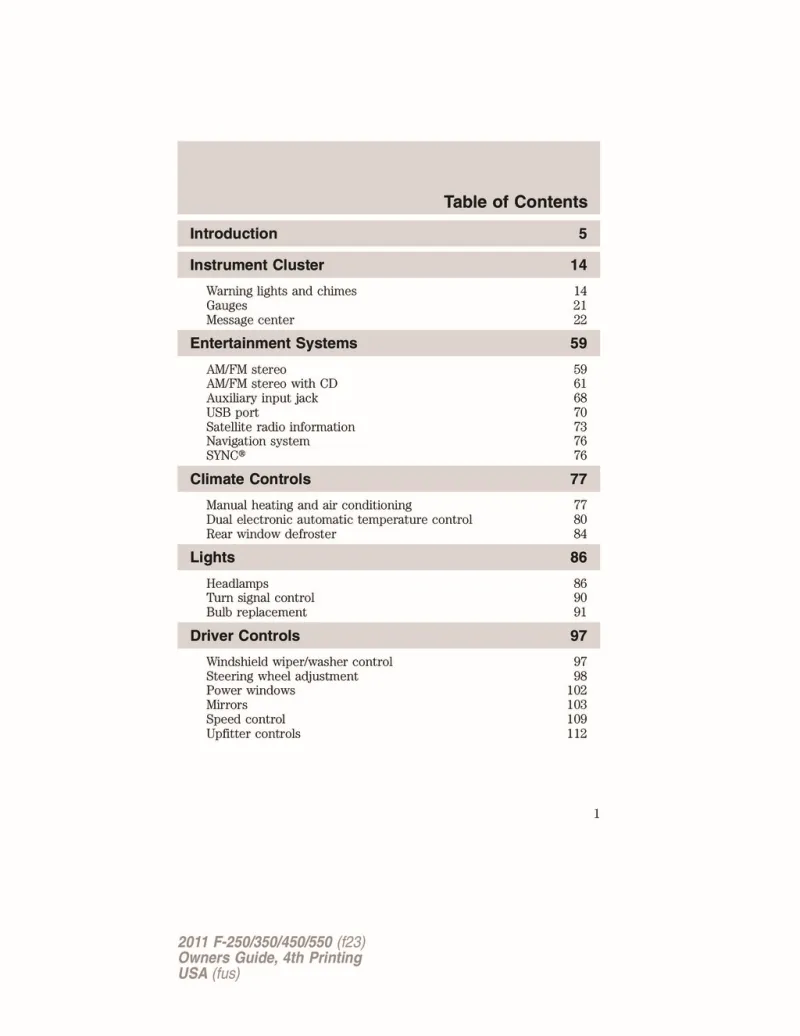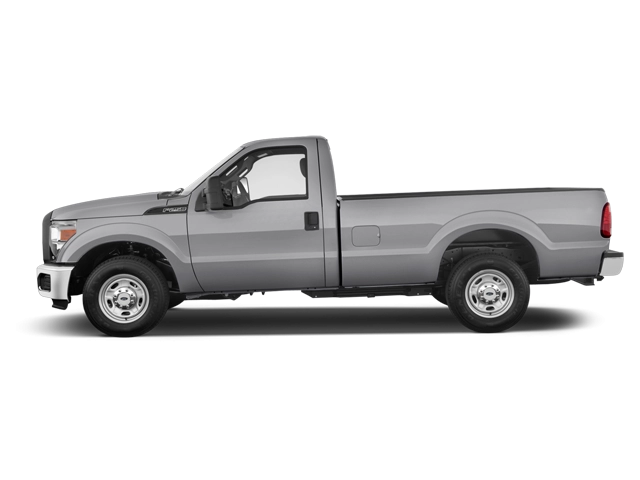2011 Ford F250 Super Duty Owner's Manual

Table of Contents
2011 Ford F250 Super Duty Overview
Introduction
The 2011 Ford F250 Super Duty stands tall in the competitive world of heavy-duty trucks, expertly balancing power, utility, and comfort. With its robust design and impressive capability, the F250 is powered by a variety of choices that cater to diverse driving needs, whether for work or leisure. This model year established a solid reputation among truck enthusiasts and professionals alike, making it a popular choice for those demanding more from their vehicles.
Powertrains
Offering two formidable engine options, the 2011 Ford F250 Super Duty caters to a range of performance requirements. Buyers can choose between a 5.4-liter V8 producing 300 horsepower and 365 lb-ft of torque or a more robust 6.7-liter turbocharged V8 diesel that generates an impressive 390 horsepower and a staggering 735 lb-ft of torque. Each powertrain is mated to a six-speed automatic transmission, ensuring smooth shifting and improved fuel efficiency even when hauling substantial loads.
Trims
The 2011 F250 is available in a variety of trims, including the XL, XLT, Lariat, and King Ranch. Each trim level provides unique features and enhancements, giving buyers the flexibility to choose a model that best meets their style and functional needs. The higher trims offer luxuries such as upgraded upholstery, advanced audio systems, and more technological conveniences, catering to those who seek a blend of rugged utility and refined comfort.
Features
Standard features on the 2011 F250 Super Duty include a robust towing capacity, trailer sway control, and a spacious cabin equipped with an intuitive layout. Higher trim levels introduce features like leather seating, dual-zone climate control, and the Ford Sync system, providing seamless integration with smartphones. Safety is a priority, with options such as rear parking sensors, a rearview camera, and side curtain airbags enhancing driver and passenger security.
Owners Manual
The 2011 Ford F250 Super Duty owner's manual serves as a comprehensive guide, offering vital information for maintaining optimal vehicle performance. It includes crucial details on schedule maintenance, troubleshooting tips, and operating instructions for various features. By referring to the manual, owners can ensure their trucks remain in peak condition, maximizing the longevity and reliability Ford is renowned for.
User manual download
The Ford F250 Super Duty owner manual for the 2011 model year is to be found in PDF downloadable format on this page. The owner manual for the model year 2011 is free and in English, but the repair manuals are usually not easy to get and may cost more.
Manual Questions
Fill the form below and someone will help you!

